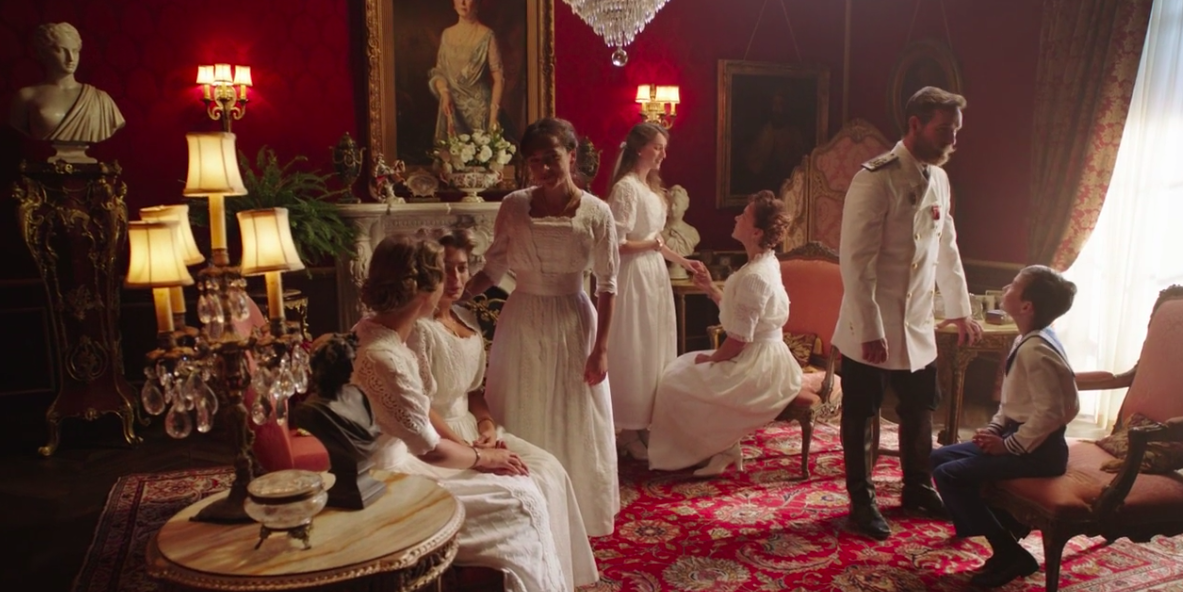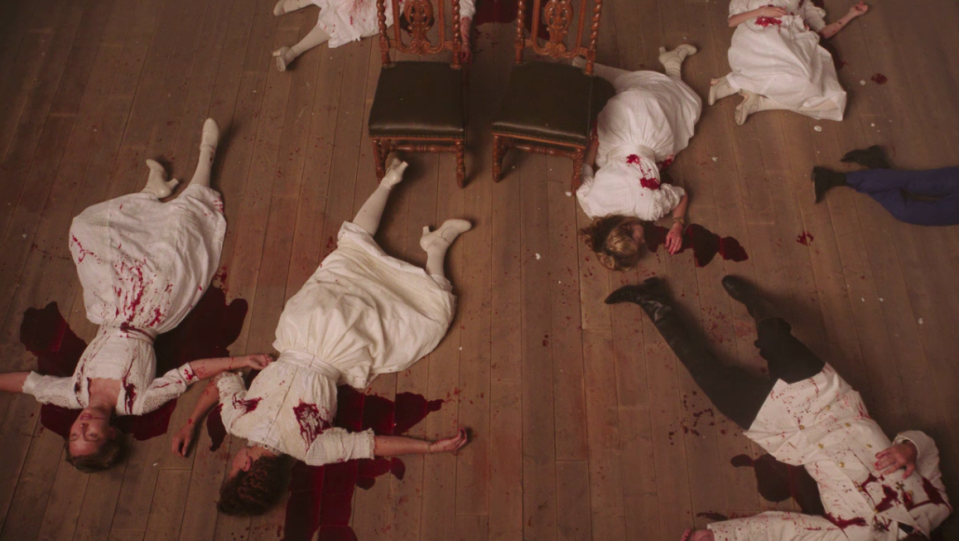What's the Story With 'The Romanoffs' Controversial Opening Credits, Anyway?

Mad Men's black and white falling man is arguably one of the most recognizable title sequences in prestige television. So it shouldn't be come as a surprise that in his second act, Matthew Weiner has once again expertly crafted a clip to introduce viewers to the world of The Romanoffs.
Press play on the Amazon original, and polite classical music draws the audience into a regal sitting room with red walls and a red rug. We're in Russia in the early 20th century. The camera pans past portraits of Romanov elders (Catherine, Peter the Great) in gilded frames until it comes to a stop on Tsar Nicholas II, Tsarina Alexandra, and their five children engaged in pleasant conversation.
Little Tsarevich Alexei wears a sailor suit, his sisters are all in White. Anyone who knows anything about the Romanovs should feel a twinge of foreboding.
And then, everything shifts. The whole family is marched into Impatiev House by revolutionary guards, perched on chairs in the center of the room, and shot dead in an almost comically gruesome scene. The murders take place to the anachronistic opening notes of Tom Petty's "Refugee," which continues to play as the blood soaks the girls' white dresses, and drips between snapshots on the floorboards. The faces in the pictures are at first faded and black and white and then increasingly diverse and modern, the continuation of the Romanov line in the new world and beyond.

The song, of course, is a nod to the Romanov relatives and aristocratic émigrés forced to flee Russia after the revolution, but it works on multiple levels, hinting at the myth of Anastasia and of the many ways that characters are emotional refugees in their own life, cut off from the people they love. (It's also indicative of Weiner's free reign over the show's massive budget; licensing an iconic Tom Petty song is the soundtrack equivalent of filming a TV show in Paris, Austria, and beyond.)
"It don't really matter to me, baby," Petty wails as photos fly up off the floor, and the scene shifts to a young redhead in a blue cape running through the woods. "You believe what you want to believe." She eventually turns into a New Yorker, exiting the subway in a vivid blue raincoat.
Did Anastasia survive the assassinations at Impatiev House? It's been proven by DNA evidence that she did not, but that doesn't seem to matter to Weiner. He's more interested in the mystique the Romanovs still hold, than what really happened to them.
The jarring scene isn't for everyone-many a reviewer on Amazon has made it known they think it's unpleasant and less-than-clever at best if not outright disrespectful. But I think it's a visceral reminder of why more than 100 years on, the execution of the Romanovs continues to capture the popular imagination.
Killing the Tsar and his wife and children again and again in the opening sequence is Weiner's way of saying that this tragedy is never really over for the members of this family. It's part of their psyche. They lost an empire generations ago, but they still feel entitled to something because of their claim to a defunct throne. It may also be Weiner's way of saying this show isn't really about the Romanovs at all. They're dead before the story even starts.
Whatever it means, that opening sequence stays with me as I watch the episodes, these often too-long mini-movies about unhappy white people. It makes me wish I were enjoying a period drama about what really happened to the Romanov family. Maybe even one set to a soundtrack of Tom Petty.
('You Might Also Like',)

